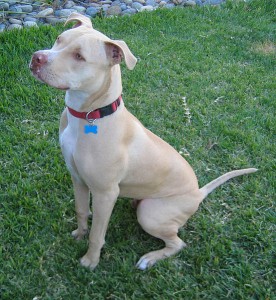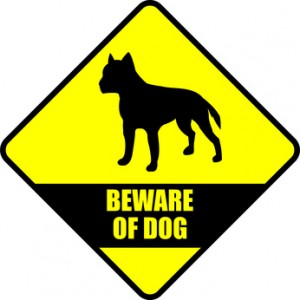Doctors warn of public health problem of dog attacks
By Drew Joseph, San Antonio Express-News
April 13, 2014 | Updated: April 13, 2014 11:04pm
SAN ANTONIO — Betty Clark was delivering Christmas presents to her Canyon Lake neighbors Dec. 21 when she was attacked by two dogs from the neighborhood.
The 75-year-old widow was found unresponsive, bites all over her body. She died about two weeks later at University Hospital, never having regained consciousness.
“She died because of those injuries,” said Dr. Natasha Keric, an assistant professor of surgery at the University of Texas Health Science Center who treated Clark. “She was walking around in her neighborhood, and then she got attacked.”
On Sunday, hospital staff said another dog-attack patient had died over the weekend. More details about the patient and the attack were not immediately available.
The two deaths and other serious dog-attack cases seen at University Hospital have driven some doctors there to direct attention to what they say are preventable injuries.
The doctors describe the wounds they’ve seen from dog bites as particularly aggressive and requiring intense care. Simply put, doctors said, dog bites amount to a public health problem in the region.
Attack numbers
The number of patients needing treatment after dog attacks has not risen significantly at University Hospital, which treats people from throughout South Texas. But doctors said the problem seems worse in this region than in other parts of the country in which they have worked.
In 2013, staff there treated 50 dog-attack patients, according to hospital data. That’s about the same as in 2012, when 52 were treated, but much higher than in 2011 and 2010, when doctors saw 40 and 30 patients, respectively.
In 2009, the number was 48, almost as many as in 2013, the data show.
San Antonio consistently has been one of the worst cities in the United States for attacks on postal carriers, according to statistics compiled by the U.S. Postal Service.
In fiscal 2010 and 2011, 39 letter carriers were attacked here, placing San Antonio among the top six cities both years. And in fiscal 2012 — the year with the most recent data — 42 letter carriers were attacked, tying San Antonio with Seattle for second place behind only Los Angeles, which had 69 attacks.
That San Antonio’s population continues to grow could account for why the number of bites has risen in the past few years, according to Animal Care Services.
There were 2,799 reported bite or scratch cases in Bexar County during fiscal 2010, according to ACS. That number grew to 3,062 cases in 2011, 3,368 in 2012 and 3,652 in 2013.
Some experts caution that dog bite statistics are unreliable.
Many people won’t report a bite if it comes from their own dog, and a bite that doesn’t cause much damage also often will go unreported, said Dr. Bonnie Beaver, a professor of veterinary medicine at Texas A&M University.
Experts disagree on how to best address the problem of dog bites. Texas has outlawed breed-specific regulations, whether banning a certain breed or mandating extra requirements to have a certain breed, ACS spokeswoman Lisa Norwood said.
San Antonio policies on dangerous dogs reflect state laws, Norwood said. Penalties range from a citation to criminal charges for pet owners and possible euthanization of the dogs.
One possible reason for the steady rise in bite and scratch numbers locally is greater awareness of laws that require residents and medical professionals to report when such injuries break the skin, Norwood said.
“You can really attribute it to an increased focus on public safety,” she said.
Pit bull scapegoats?
Cohn, one of the University Hospital doctors, has been vocal in his call for regulations on breeds such as pit bulls. He was one of the authors of a 2011 study that found that, while fatal attacks were rare, pit bulls were “the single breed responsible for the vast majority of deaths due to dog attacks.”
Cohn also pointed to a 2010 study that analyzed the effect of breed-specific rules on dog bites in a region of Spain. Governments there enacted regulations that required additional steps for owners of “potentially dangerous dogs,” some of which were defined by breed.
According to the study, there was a “noticeable decline” in hospitalizations from dog bites after the rules went into effect.
But a recent study in the Journal of the American Veterinary Medical Association that reviewed several cases where governments imposed extra regulations on certain breeds found that the rules are “unlikely to be effective.”
The study also argued that the media and some researchers place too much focus on the breed after an attack and do not consider how a dog was raised.
“The undue emphasis on breed has contributed to a lack of appreciation of the ownership and husbandry factors that more directly impact dogs,” the authors wrote in the study, published in December.
Part of the problem, the authors argued, is that witnesses and the media often misidentify the breeds of the dogs involved. Even the term pit bull is vague — often used as a catch-all for at least three breeds, experts say.
Beaver, a former president of the American Veterinary Medical Association, said most dogs that bite fit four categories. They are not vaccinated, are not licensed, are males that have not been neutered and are chained or tied up, she said.
Breed-specific laws, she said, do not address those problems and do not work.
“It doesn’t matter, whether you ban them or make them take extra steps,” she said.
Dog lover becomes victim
The Comal County Sheriff’s Office has declined to release the full incident report about the attack on Clark in December at Canyon Lake, citing an ongoing investigation.
But according to doctors and her niece, Clark was attacked by two pit bulls.
She died Jan. 6 with bites on all her limbs, torso, abdomen and head, according to a case presentation on her death prepared by her doctor.
The youngest of eight children, Clark was known for her great sense of humor, said niece Gayle Dreisbach. She had two children — one of whom died in 2010 — and three dogs of her own.
“She had a poodle, a little Yorkie and a Chihuahua,” Dreisbach said. “She really loved her dogs.”
****************************
American Pit Bull Terrier
POTENTIALLY DANGEROUS DOG BREEDS
This is a list of dog breeds that have a history of being potentially dangerous to people, especially children. Daxton’s Friends for Canine Education and Awareness understands that any dog has the ability to bite or inflict serious harm to humans. This list consists of several dog breeds that have a higher than average number of recorded human fatalities. Please use extreme caution if you choose to bring one of these breeds into your home. Rental communities and homeowners insurance may restrict many of the dog breeds on this list due to the likelihood of a serious incident.
Pit Bulls, Mastiff, and Rottweiler lead in fatalities and are listed first. The rest of the breeds are listed in alphabetical order:
Pit Bull Terrier Family
- American Bulldog
- American Pit Bull Terrier
- American Staffordshire Terrier
- English/Standard Bull Terrier
- Miniature Bull Terrier
- Olde English Bulldog
- Staffordshire Bull Terrier
Mastiffs


